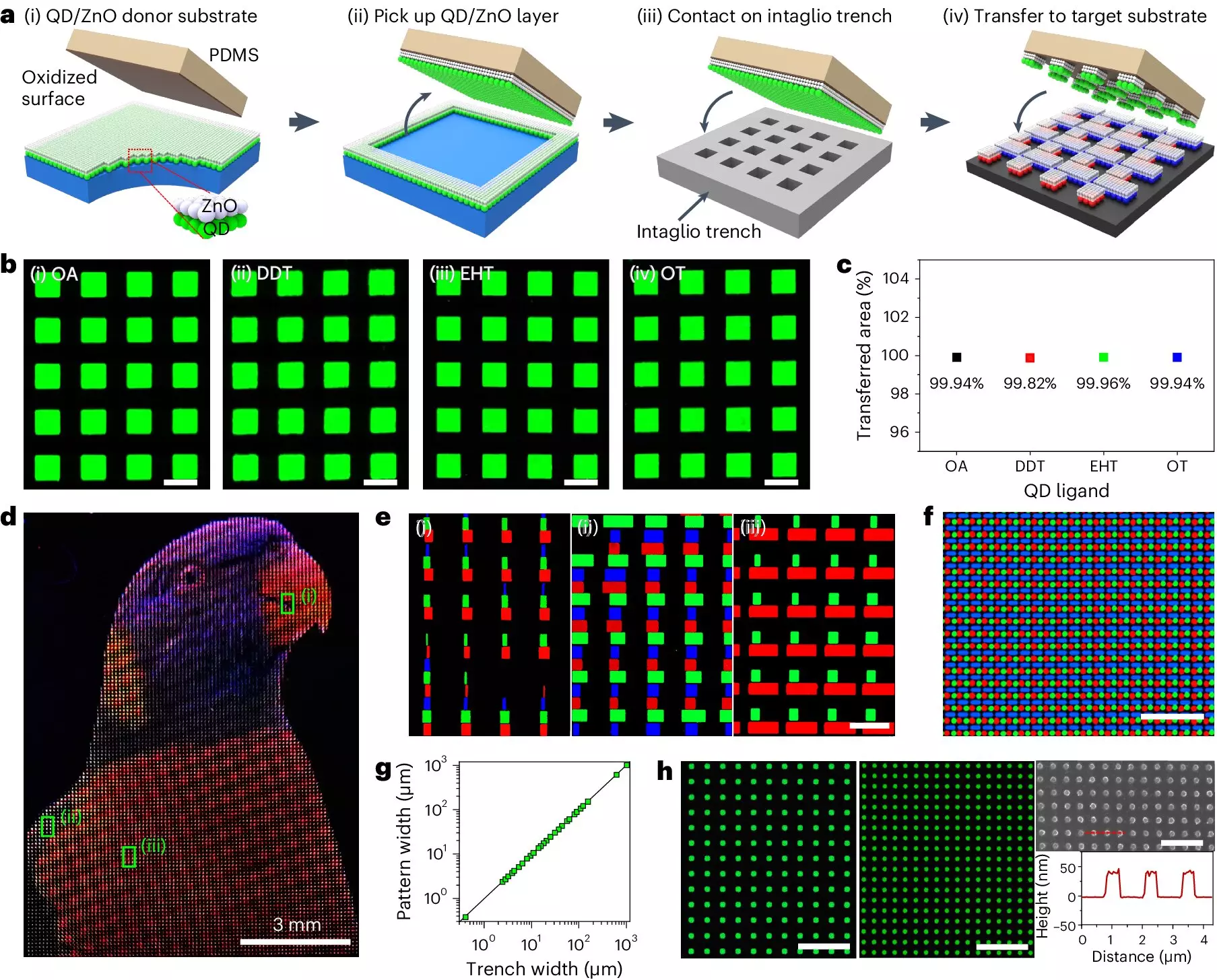In a groundbreaking development, a research team has introduced a novel double-layer dry transfer printing technology that revolutionizes the creation of light-emitting and electron-transferring layers on a substrate. This innovation is set to redefine the immersive experience in augmented reality (AR) and virtual reality (VR) applications, by offering a more lifelike and captivating display for users.
The Driving Force Behind the Demand for AR and VR Technologies
The surge in demand for AR, VR, and wearable displays is being fueled by the rapid advancements in wearable, mobile, and Internet of Things (IoT) technologies. Devices such as smartwatches and augmented reality glasses require high-definition displays capable of conveying vast amounts of information on small screens without causing discomfort or dizziness to the users.
The Potential of Quantum Dot Nanoparticles
Quantum dot nanoparticles have emerged as a promising alternative for the next generation of display light-emitting materials due to their superior color purity and reproduction capabilities. However, traditional dry transfer printing methods have faced challenges, such as low luminescence efficiency of under 5%, hindering their practical application in display production.
In a collaborative effort by DGIST Professor Ji-woong Yang, UNIST Professor Moon-kee Choi, and Taeg-hwan Hyun of the IBS Nanoparticle Research Center, a new dry transfer printing technology was developed to address the limitations of existing methods. By implementing a double-layer thin film approach, the researchers were able to achieve high external quantum efficiency (EQE) of up to 23.3%, significantly enhancing the brightness and efficiency of light-emitting devices.
The newly developed double-layer dry transfer printing technology has paved the way for the mass production and commercialization of high-resolution displays for AR and VR applications. With the ability to produce ultrahigh-definition patterns of quantum dots up to 25,526 pixels per inch (PPI), this innovation marks a significant milestone in the advancement of display technology.
Professor Ji-woong Yang expressed his excitement over the successful fabrication of light-emitting devices with double-layer thin films, boasting an impressive EQE of 23.3%. The potential of this technology to enhance the resolution and efficiency of screens in AR and VR applications has been recognized by Professor Moon-kee Choi, who highlighted the promising future prospects of this research. The future of AR and VR displays looks brighter than ever, thanks to the groundbreaking advancements in double-layer dry transfer printing technology.


Leave a Reply